How Quarterbacks Are Made

Two high school quarterbacks from opposite ends of the country met for the first time in July 2012, during the summer before their senior seasons. One, a golden-haired jokester in Blues Brothers spectacles, the son of an ex-Major League Baseball player turned firefighter, was coming off a heartbreaking championship loss at the Oakland Coliseum to close out his junior year in California. The other, a brown-haired boy with green eyes and a chiseled jaw, the son of a former college football player, was a year removed from winning a state championship in Virginia.
They crossed paths during the final round of Elite 11, the foremost quarterback competition for high schoolers on the recruiting trail. Organizers of the annual QB combine remember Jared Goff and Christian Hackenberg as natural leaders with 'live' arms. Both finished among the top six out of some 2,000 hopefuls who either tried out or submitted film, and each would each go on to have success as college passers—Goff at Cal, and Hackenberg at Penn State—before being selected two rounds apart during this year’s NFL draft.
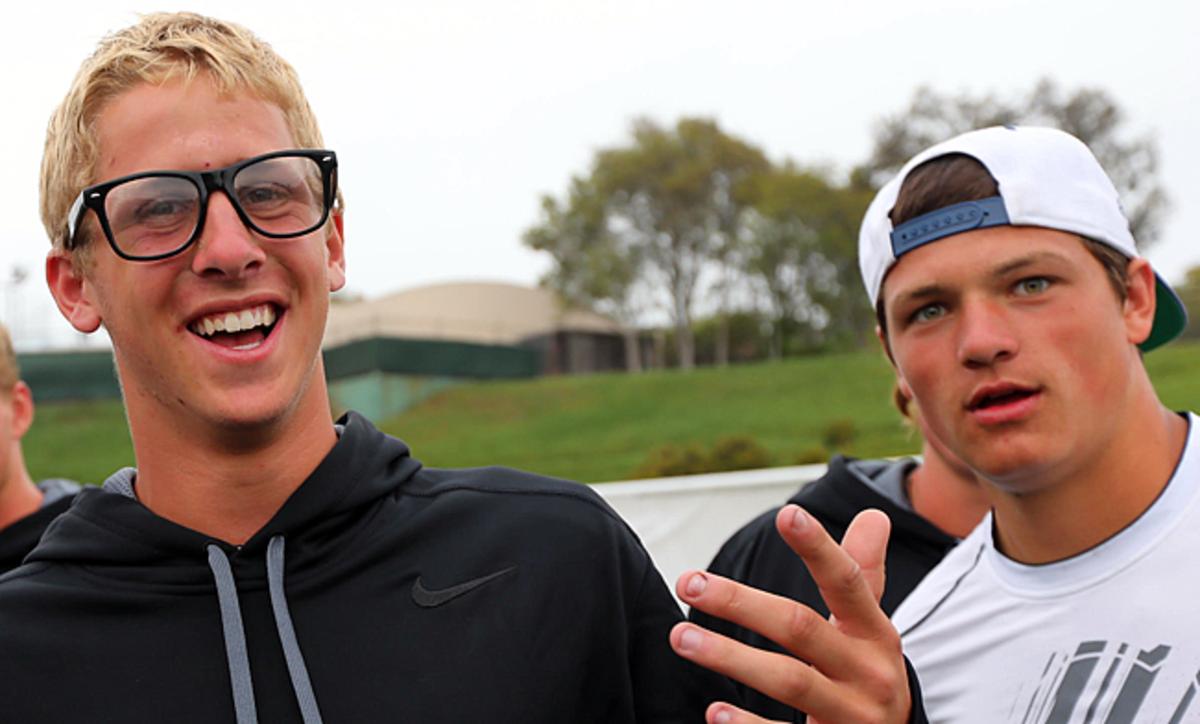
Goff and Hackenberg are gifted athletes who successfully navigated the world of major college football and turned pro. They are both 6-foot-4, upwards of 200 pounds, can make virtually every throw and possess the unquantifiable traits that often define their position.
“His greatest asset is the fact that he stays pretty composed even in the most adverse situations,” says Goff’s father, Jerry, a former catcher for the Expos, Pirates, and Astros. “I was not nearly that mentally strong when I played. I was a mess.”
“I think Christian had some advantages,” says Hackenberg’s father, Erick, a former letterman at Virginia whose own father was a high school coaching legend. “Just because of genetics and because of the wiring. It’s who he is.”
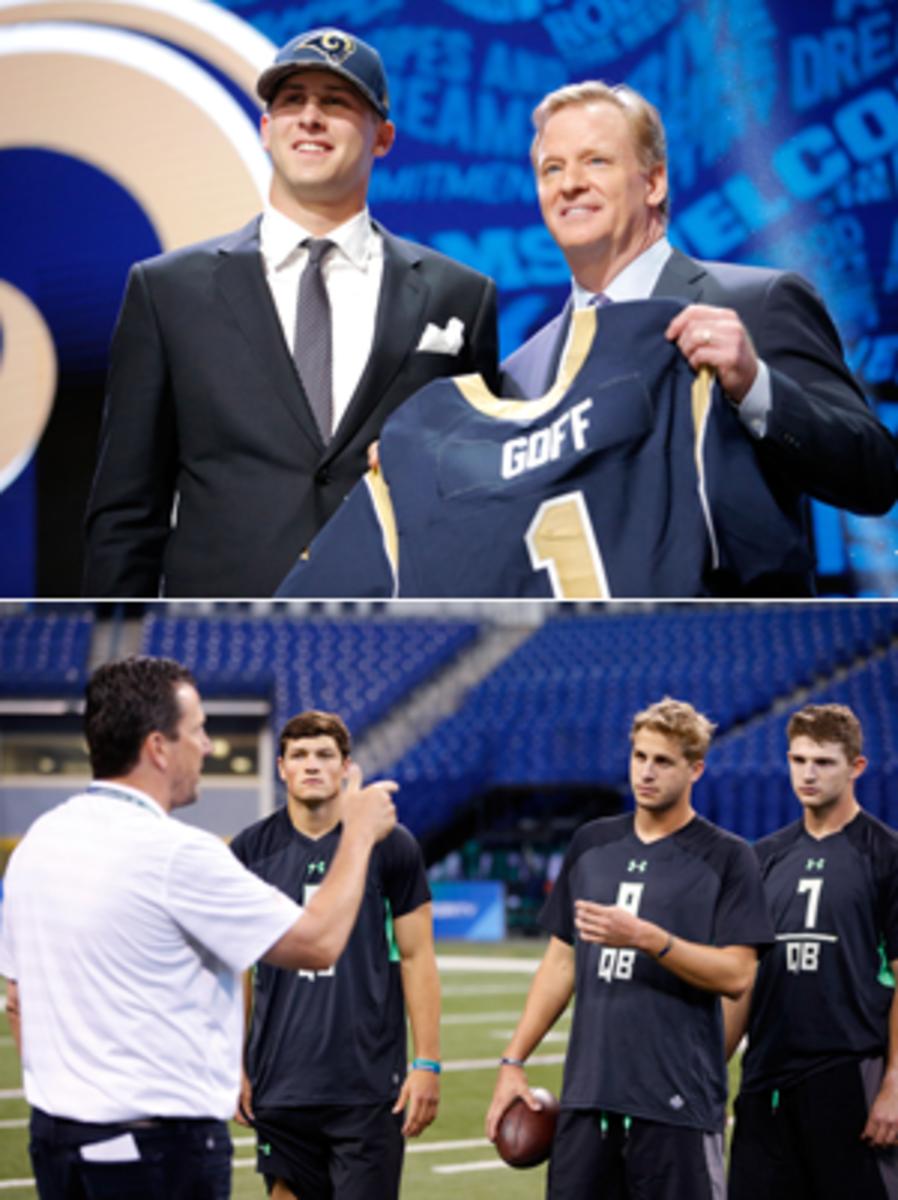
Intangibles
For answers, The MMQB examined the youth football careers and family backgrounds of the 15 quarterbacks who were drafted in 2016 (a record number). They are not all coach’s sons, nor are they all sons of ex-athletes. And while a certain basic requirement for arm strength unites them today, it didn’t link them when they were first handed a football as kids.
After consulting with experts in the field of training and evaluating quarterbacks, and after interviewing more than two dozen parents and coaches of these newly minted NFL passers, we identified several key life experiences that appear to be predictors of success:
• 13 of the 15 quarterbacks grew up in homes that were valued near or above the median home value in their respective state, according to public records and online real estate figures. Seven families lived in homes that were more than double the median values: Goff, Hackenberg, Carson Wentz, Connor Cook, Jeff Driskel, Kevin Hogan and Jake Rudock.
• 13 of the 15 quarterbacks in the 2016 draft spent their early childhoods in two-parent homes. (Of note, a majority of the 30 parents hold four-year college degrees.)
• On average, the 15 quarterbacks taken in the 2016 draft began playing the position at age 9, with only two having taken up the position in high school.
• At some point before high school graduation, with many paying significant fees or traveling great distances to do so, 12 of the 15 received varying degrees of individual instruction from a QB coach who was not a parent or a team-affiliated coach; 12 of the quarterbacks also participated in offseason 7-on-7 football during their high school careers.
These 15 passers have undoubtedly met the very high bar for work ethic and talent set by the NFL. But those two traits alone don’t explain the entire landscape.
During the summer when Goff and Hackenberg first met, Christian had grown tired of his father’s advice on the minutiae of quarterbacking. Hour-long workouts between father and son descended into “20 minutes of work and 40 minutes of arguing,” as Erick puts it. So the father flew with his son to meet QB guru Skip Stitzell in Fayette, Mo., where Christian would spend a weekend with the coach under his father’s watchful eyes. Stitzell became part of a network of coaches that now includes ex-NFL players Trent Dilfer and Jordan Palmer, to whom Erick could also turn when he wasn’t getting his point across to Christian.
“I had to figure out how to be the smart 40-year-old and outsmart the 16-year-old,” Erick says. “I would use them at times when we were bucking heads and say, ‘Hey can you give Christian a call? He doesn’t have to know we talked.’ ”
Jerry Goff, the former baseball player, didn’t build a Rolodex of quarterbacking minds to set his son on the right trajectory. He more or less did it with an initial conversation. When Jared took up football at age 7, a friend of Jerry’s coached the team while Jerry resolved to watch practice from a distance. On the first day, the coach placed the tall-for-his-age Jared on the offensive line and had him place his hand in the dirt. It would be the first and last time that Jared Goff assumed a three-point stance. Jerry told his friend after practice, “He’s not a lineman.”
Many of the 15 quarterbacks selected in the 2016 draft have benefited from factors such as parental involvement, family wealth, individual instruction and offseason competition—or some combination that increased opportunity not only for personal growth, but also to be noticed by coaches and scouts along the way. It begs two obvious questions: How much do these factors separate NFL draftees from the rest of the crop? And who is being left out?
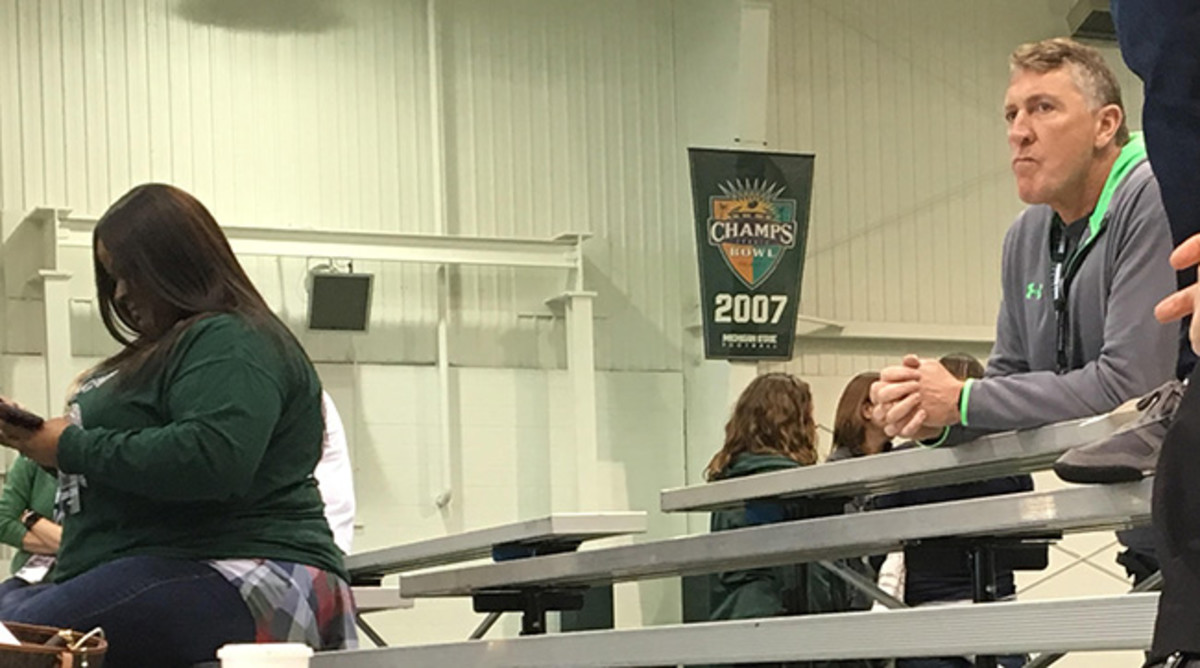
The Best Friends
At Michigan State’s pro day on March 16, Chris Cook paced nervously behind a row of bleachers assembled in the middle of Spartans’ indoor practice facility. An imposing man with a broad smile, Chris had played tight end at Indiana from 1982-84 and now works as a district sales manager for a German-based engineering firm. On this particular day, his other job was to stress over his son’s impending performance in front of representatives from all 32 NFL teams. At one point, he interrupted a conversation to corral renowned QB guru George Whitfield with a question: “Will Connor have sweat towels out there?”
“Yeah,” said Whitfield, who deals with more quarterback dads than most college head coaches. “Four or five.”
Chris’s involvement in his son’s affairs and his outsized, sometimes abrasive personality were noted by several NFL evaluators as potential red flags for Connor Cook, who fell to the Raiders in the fourth round. After the Michigan State QB was drafted, screenshots of aggressive and homophobic tweets apparently published years ago by Connor’s father surfaced in media reports and provided a public glimpse of what teams had known for months. According to a source close to the Spartans’ program, Chris called coach Mark Dantonio at the beginning of last season and expressed concern that the team’s decision to not make Connor a captain would damage his draft stock.
In 2012, when Connor was a redshirt freshman, Chris led the charge after Dantonio initially denied their request to work with an outside QB coach. The Cooks were willing to pay for private tutoring with Whitfield, but Dantonio wouldn’t budge. (Many coaches don’t want outside influences to alter a player’s mechanics.) “He won’t let him go,” Chris says, “so we’re saying, ‘What the hell? What the hell?’ We kept pressing.”
Dantonio eventually relented prior to the 2013 season, and Connor earned the starting job early that year. He would go on to win 35 games over the three seasons as the starter. Chris, who describes his son as his best friend, was there every step of the way. He was an assistant coach on Connor’s first tackle football team, when the head coach tabbed the fourth-grader to be the starting quarterback in a run-heavy offense. When Connor was in seventh grade, Chris took him to Raw Talent Sports, about 15 miles south of Cleveland, so Connor could play 7-on-7 in the offseason. Soon, Connor was bringing teammates to work on timing.
Chris and his wife, Donna, a former basketball player at the University of Cincinnati, paid for Connor to join Raw Talent on bus tours to one-day camps across the Big 10, from South Bend to Ann Arbor to Columbus. “I don’t think Connor would have ended up at Michigan State without that camp tour. Nobody had heard of him,” says Raw Talent owner Mark Harris, a former cornerback at Kent State who sells himself as a certified strength and speed specialist. “Connor’s parents are crazy. They’re very supportive. I love them to death. They were about helping all these kids out, not just their own.”
Connor participated in the national underclassmen combine, as well as the Las Vegas Elite 11 regional tryout in 2010. He declined to go further with Elite 11 so he could attend Michigan State’s camp. He did all this despite having never appeared in a playoff game at Walsh Jesuit in Cuyahoga Falls, Ohio (he came within one game of qualifying during his senior season).
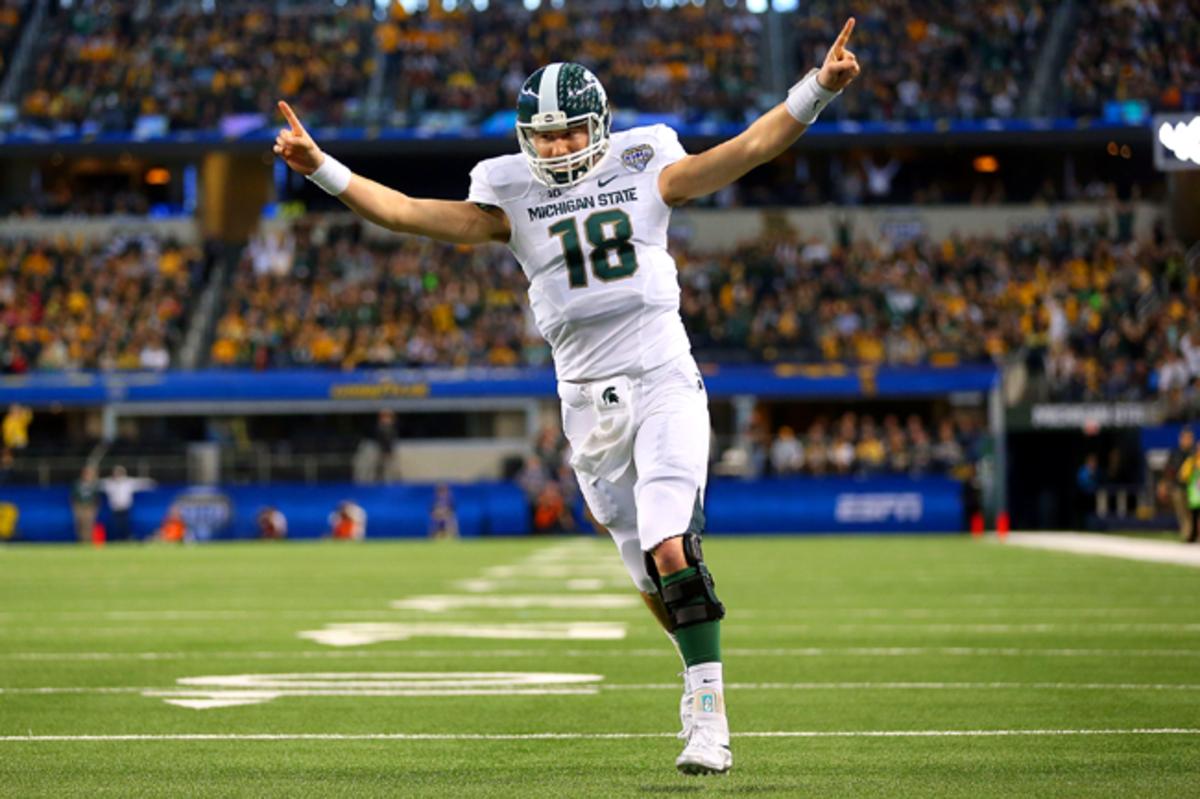
So what do we know about Connor Cook?
On a team his father helped coach, he was tabbed as a quarterback at a young age, in an offense that did not emphasize passing. Nevertheless, he got the opportunity to direct an offense and an early reputation as the signal caller, as a leader. Having grown up in a home more than four times the value of the median home in Ohio, Connor and his sister, Jackie, were born into a family with ample resources. (Jackie also trained at Raw Talent and went on to play basketball at Old Dominion.) Those resources were channeled by a father who was invested in Connor’s athletic success and knowledgeable about the recruiting process, and bolstered by a mother who could logistically, financially and emotionally help support the family’s ambitions.
“When you have two parents and you have wealth and you have structure, you have more access and you’re exposed to more things,” Whitfield says. “Then you know when to get on that circuit. To know when to get some highlight tapes—you need an institution behind you.
“Really, truly, you could have a working-class family and many have made it out, but when you just peek around the league at some of your star quarterbacks, they were raised to be CEOs, and rightfully so. That’s not a knock.”
Connor was exposed to individual instruction at a young age, and began stacking up reps in offseason competitive scenarios as early as middle school. The instruction didn’t come in his backyard either; it was a 45-minute drive away.
“A lot of it comes down to resources,” says Bruce Feldman, author of The QB: The Making of the Modern Quarterback. “The position is so nuanced, you don’t have guys showing up in college with very little experience and having success at quarterback like you see with other positions. Rarely do guys all of a sudden become quarterbacks.
“At the same time, I remember Oliver Luck telling me, you can’t force it on the kid. If they don’t really love it, they’re not going to be doing the extra work and doing all the stuff that it takes to be really, really good.”
Born of opportunity, nurtured by advocacy and kept alive by ample resources, a young quarterback’s ambition often snowballs. The intangibles are rarely innate. You become a quarterback in that heightened sense of the word—in the way that Brady, Manning and Rodgers are quarterbacks—through an accumulation of experiences.
“I think what really happens is confidence,” says Dr. Kevin Elko, a sports psychologist who has spent the past several months interviewing QB prospects for the Eagles. “A lot of people think that confidence is a gene and that it’s sort of an emotion, but the real answer is a choice that someone modeled and helped you practice.”
In this survey, we encountered a father from Modesto, Calif., who drove his son 90 minutes every weekend to work with a preferred quarterbacks coach in the Bay Area. There was also a mom from Deltona, Fla., with a look reserved only for coaches that could burn through a brick wall. But first, let’s examine two quarterbacks from the 2016 draft who don’t seem to fit the mold of a modern NFL upbringing.
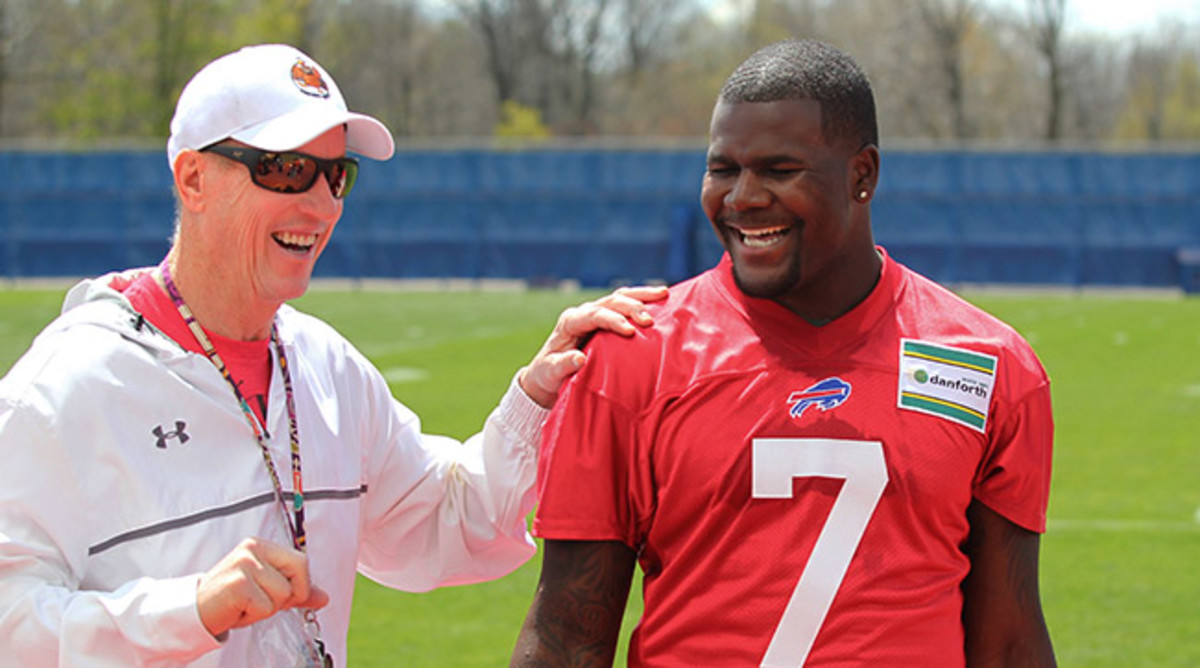
The Outliers
“There are some 5- or 6-year-olds running around tackling each other, getting into stuff right now. Some of them have a 10-lane highway to become a quarterback, and some of them have a rope bridge. They don’t even know.”
— George Whitfield
Cardale Jones was born at the beginning of a rope bridge.
The youngest of six children, Jones was raised by a single mother and says he’s never met his father. He and his siblings grew up bouncing from home to home in East Cleveland, eviction notices decorating their trail. Despite this nomadic lifestyle, Cardale never moved far from Glenville High, where his youth team practiced not far from one of the city’s powerhouses. The coach of that team? Ted Ginn Sr., the father of NFL wide receiver Ted Ginn Jr.
When he was 8, Cardale was a tall, bony kid playing offensive and defensive line for the Glenville Titans. He often walked around the outskirts Glenville High’s practice on the way to his own practices, and was soon noticed by Ginn Sr. “Get the ball and throw it,” the high school coach told him one day. “You look like a quarterback…”
Says Ginn Sr.: “He’d throw it and I’d say ‘You can’t throw. Go on somewhere.’ So he’d smile, laugh and every day he’d come back. And he did it everyday just to come by for me to tell him what he couldn’t do.”
The practice paid off, and soon enough, Cardale Jones would stand out for his prodigious arm strength. (He has been known to throw a ball 65 yards while kneeling.) As a freshman in high school, Jones was tabbed by Ginn Sr. to play quarterback for the first time. The coach had obtained a certain level of autonomy in personnel choices, thanks in part to the fruits of his labor; since 2006, Glenville has sent a dozen players to the NFL, including ’06 first-round pick Donte Whitner.
“He didn’t get the early start that a lot of guys in the NFL get,” Ginn Sr. says of Jones. “I figured he could overcome that with God-given talent. Even when he was eight or nine, he could throw the ball and it was bigger than his hands.”
In January 2008, early in Cardale’s high school career, his mother, Florence, was arrested for and later pled guilty to drug possession charges. Cardale sought refuge with Michelle Nash, a Cleveland woman who first mentored and then became the quarterback’s nonlegal guardian. Nash brought structure and discipline to Cardale’s life; Ginn Sr. brought resources. In the offseason he played 7-on-7 and threw footballs to NFL wideouts, including Ginn Jr. The coach connected the pupil with numerous throwing coaches and speed coaches, including Mark Harris at Raw Talent, who asked his church to sponsor kids who couldn’t pay for his services. It was Ginn Sr. who inspired Harris to start the bus tour that got Cook noticed by Michigan State. For 20 years, Glenville has done its own tour of the Big 10, while also occasionally playing out-of-state schools on national TV.
After graduation, Jones needed a year at Fork Union Military Academy in Virginia to qualify academically for college; he enrolled at Ohio State on a full scholarship in January 2012. After three turbulent seasons at Ohio State in which he tossed just 269 passes but also won a national championship to close out the 2015 season, Jones was a fourth-round pick of the Bills.
Currently, Ginn Sr. is working on another project: A big-bodied, 6-foot-4 high school sophomore who plays basketball, but not football … yet. Says Ginn Sr., “He’s a millionaire and doesn’t even realize it.”
In North Dakota, they don’t share Ginn’s optimistic appraisal of high schoolers. In 2011, the year Carson Wentz graduated from Century High School in Bismark, there were two Division I recruits in the entire state, making it a boom year. The offensive lineman from Fargo signed with Missouri, and the defensive end from Wahpeton signed with Toledo. Wentz, who was drafted No. 2 overall by the Eagles, didn’t have a Division I offer.
Wentz had been groomed to be Century High’s quarterback since he was in the fifth grade: his throwing ability, leadership and football cognition made him a standout. “He always had that workman mentality that he wanted to get better every day of every practice,” says Nick Walker, former Dickinson State quarterback and Carson’s QB coach in high school. “The other thing is his intelligence was off the charts in terms of what you could give him. He was so smart, but his work ethic and leadership set him apart.”
Wentz’s model? His father was an all-conference linebacker at Northern State University in Aberdeen, South Dakota. Still, playing high school ball in North Dakota presented mountainous challenges. Hopping in a car for a tour of college camps was unrealistic, and there was no access to offseason football, but the biggest hindrance was a shoulder injury that Wentz suffered as a varsity baseball pitcher that prevented him from playing quarterback during his junior season. He played wide receiver and defensive back until finally getting the opportunity to start under center full-time as a senior. He capitalized, earning North Dakota 3A Player of the Year honors in 2010. He landed at North Dakota State and started winning national championships, passing for 5,115 yards in his season-and-a-half as the starter (he broke his wrist six games into his senior season).
For Carson Wentz, there was no offseason football in his formative years. No camps. No powerhouse high school program or influence-wielding coach. He didn’t have multiple college offers, which gives the quarterback an opportunity to pick the offense best suited to his skills and ambitions. It shouldn’t have worked out for Wentz, but it did. He refused to let his circumstances dictate what was possible, and his prodigious arm led the way.
“It was very clear to us, even at a young age, that he could make every throw we could ask him to make,” Walker says. “And that’s something that has carried him. He’s a leader, of course, and he can put the football wherever he wants.”
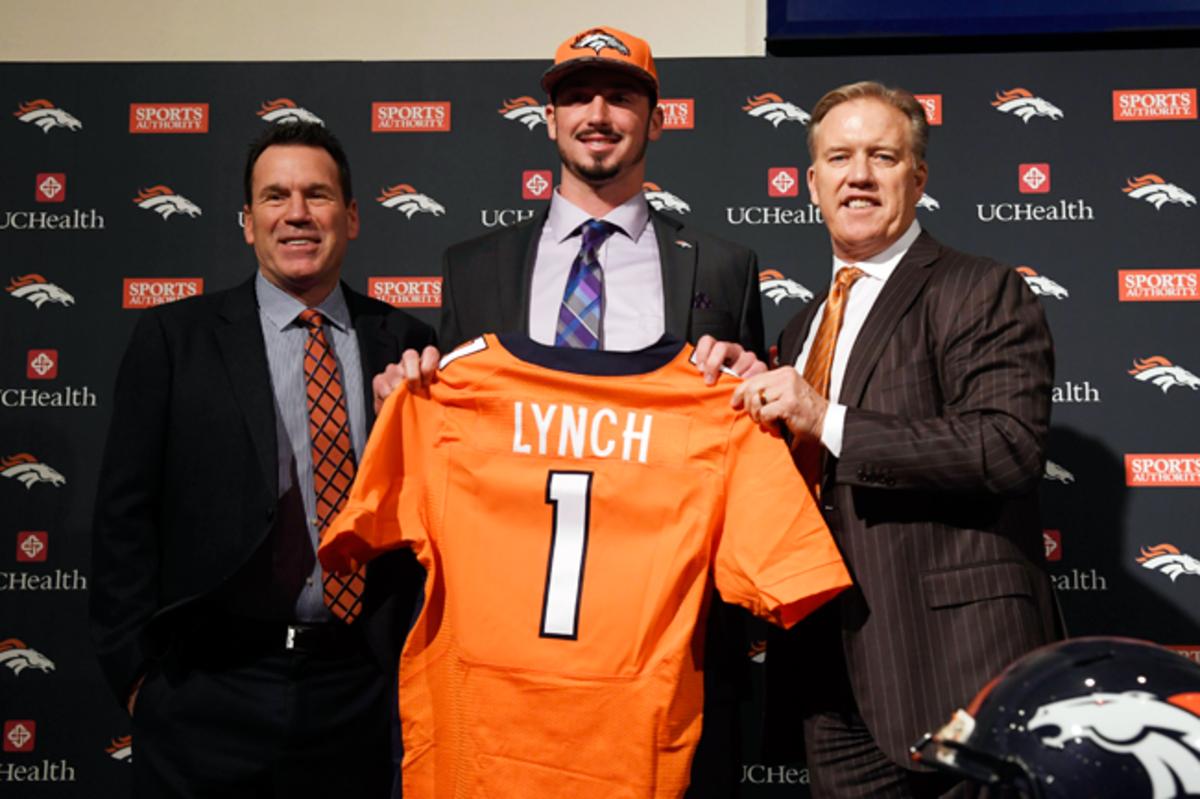
The Advocates
What all of these quarterbacks have in common—even the outliers in this study—is empowerment. Along the way, their efforts were first validated by parents or guardians, and then by multiple people whom each athlete respected in a football sense. From California to Louisiana, parents of quarterbacks who make it this far are often described by people using the same words: devoted, intense, and very supportive. The high school coach of former Memphis quarterback Paxton Lynch, a first-round pick of the Broncos, describes David and Stacie Lynch as having been “very involved.”
“Stacie is like the rock of the family,” Allen Johnson says. “She’ll give you that look and let you know something ain’t right. I’m practically family, so I didn’t get the look, but I saw the look come at other coaches in other sports.”
Kevin Hogan, the former Stanford QB and fifth-round pick of the Chiefs, was once ferried by his parents from a summer basketball tournament in New Jersey to a 7-on-7 tournament his high school football team was playing in at the University of Virginia—all in the same weekend. “They were just very supportive of everything Kevin did,” said Joe Reyda, Kevin’s head coach at Gonzaga High in Washington D.C.
The Dolphins’ seventh-round selection, Brandon Doughty, is a local kid who grew up in Davie, Fla. In order to get on the recruiting radar, his father took him to camps as far away as Boston College and Ohio State. “I’m gonna be honest man, my dad’s my best friend,” says the former Western Kentucky quarterback. “I don’t even know why I remember this, but we were at N.C. State when Michael Jackson died, and I just remember exactly where we were. The recruiting stuff was a bonding time with me and my dad. It’s something I’ll hold dear to my heart for the rest of my life.”
Former N.C. State quarterback Jacoby Brissett’s single mother, Lisa Brown, could be heard cussing out head coach Jack Daniels from the stands during games at Dwyer High (Fla.) for any number of reasons, always in support of her son. The Patriots drafted him in the third round. “I didn’t really get to know her until 10th-grade year when she cussed me out for not putting her son in the game,” Daniels says with a laugh. “She’s a great lady, and a competitive lady.”
When 7-on-7 football was gaining national popularity, Jared Goff couldn’t find a league close to home, so his father helped him organize his own team that competed in the Bay Area. “It was his idea,” Jerry Goff says of his son. “It was just a great experience.”
The high school coach of Dak Prescott, the fourth-round selection of the Cowboys, described the quarterback’s mother as having been “very involved” in Dak’s career. “She knew football,” Haughton High (La.) coach Rodney Gion says of Peggy Prescott, who died in 2013 after battling colon cancer. “She would question us quite often on stuff. I can just remember seeing her in the store one day, and she said, ‘I don’t know about that offensive coordinator. That Cajun don’t know what he’s doing.’ She was phenomenal—the kind of woman you’d want on your side in a fight.”
Ken Mastrole, an ex-NFL and NFL Europe quarterback, runs the Mastrole Passing Academy in Florida. He worked with both Doughty and Detroit Lions rookie Jake Rudock in high school, and says there’s typically a clear distinction between the parents of successful quarterbacks and those who struggle to reach the upper echelon. “I get so many parents who are so pushy you can tell they want it more than the kid,” he says. “With the top quarterbacks, the parents are aggressive, but they put the kid in the right position to make his own decisions.”
The investment made in these quarterbacks by adults other than their parents often inspired the kids to further invest their own time and effort. For Wentz, that outside influence was Nick Walker, his position coach in high school whom he says was among the first to believe in his future as a quarterback. For Jones it was Ginn Sr., who recognized his potential long before he realized it himself. In West Palm Beach, Jacoby Brissett counted as one of his mentors former Super Bowl-winning head coach Bill Parcells, who lives in the area and is close with Brissett’s high school coach. Eleven of the 12 remaining quarterbacks, most of whom had more resources at their disposal, worked extensively with private QB coaches.
Former Indiana quarterback Nate Sudfeld had met former Cal head coach Roger Theder through Colin Kaepernick, who played at Nevada with Nate’s brother, Zach, now a Jets tight end. Nate became a client and protégé of Theder’s as a sophomore, according to Nate’s father. When he wasn’t in season or spending weekends playing travel basketball, Nate and his father drove the 80 miles from Modesto to the Berkeley area.
A month ago, Nate’s parents, Ralph and Michelle Sudfeld, were visiting Nate at Indiana. Driving through his college town for one of the last times, the quarterback felt nostalgic. “Dad, I’m thinking about all the times we got up at 6 a.m.,” he said, “and picked up another receiver off the team, and you drove us out to the Bay Area, and you dropped us off, and you sat there for about six hours. Then we get in the car and we have a two-hour drive home. As often as you did that, I have to thank you for that.”
Washington drafted Sudfeld in the sixth round.
Roger Theder, 76, coached for Cal, Stanford, San Jose State, the Colts and the Chargers before turning to private tutoring in the early 1990s. In 2011. he told the San Francisco Gate he was working with about 200 kids per year, with several passers travelling to see him from out of state. “Roger was a big deal to him,” Ralph says. “He wasn’t a parent or an immediate football coach, and that was big. Roger saw something in him and I just saw Nate blossom under him.”
Many have debated the value of so-called quarterback gurus for more than two decades, ever since people such as Theder got involved and created a cottage industry. Many college and pro coaches privately lament that quarterbacks are showing up to preseason camps heaving learned bad habits. Other coaches sing the praises of private coaches who can work with athletes during periods when NCAA and NFL rules bar teams from having contact.
It’s become standard for draft eligible quarterbacks to sign with agents who will pay for the athlete to work out with a coach of his choosing before the draft. And the fee will typically range anywhere from $10,000 to $20,000, depending on the prominence of the athlete. In some cases, the bigger the name, the less he pays. Often enough, though, the quarterback coach has had a relationship with the pupil long before the draft process.
One of the major benefits to youth quarterbacks is the progressive effect of empowerment, according to Dr. Elko, the sports psychologist. “All coaches are not created equal,” Dr. Elko says, “but the really good coach will show you how you’re better and convince you you’re better. That’s especially important for quarterbacks, because we know the best quarterbacks have a confidence that’s not really related to anything tangible. They just believe.”
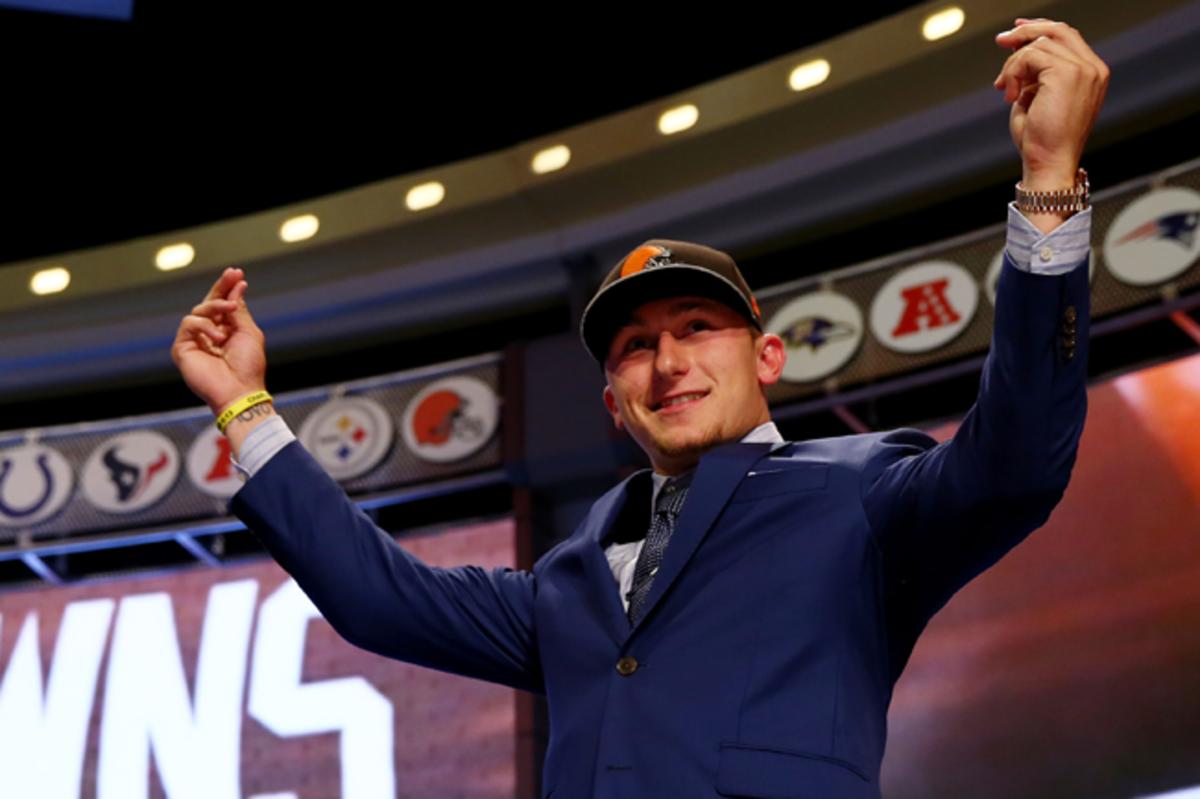
The Pick
In 2012, Joe Banner was willing to go to any lengths to end the Browns’ monumental streak of bad quarterback play. With an eye toward the future, the team president commissioned a study to determine the best quarterback that would be available in the 2014 draft. That study, completed after Banner’s firing in early 2014, would cost the team over $100,000.
The criteria were purely analytical. For example, one measure defined completion percentage under pressure on one side of the field versus the other, and how it projected to the pros. Infamously, the Browns ignored the study and drafted Heisman winner Johnny Manziel over the recommended passer from Louisville, Teddy Bridgewater. (Since 2005, when the Browns drafted Akron QB Charlie Frye in the third round, 18 quarterbacks have started at least one game for Cleveland.)
Before Banner’s firing, quarterback intangibles had been discussed at length by the staff, but not factored into any sort of formula. Banner already knew what to look for. He was the Eagles’ team president in 1999, when Philadelphia selected Donovan McNabb with the second overall pick. He was the second of five quarterbacks drafted among the first 12 picks (Tim Couch, McNabb, Akili Smith, Daunte Culpepper and Cade McNown).
“We got down to a few guys that we really liked, and they were really close,” Banner says. “And what actually was the deciding factor was the closeness with his family, and the strength we thought he had from being surrounded by who we heard were good people.
“I think it would be difficult to articulate the amount of pressure you have to handle at the quarterback position to be successful, and I don’t think that just starts in the NFL. You don’t need a Ph.D. in psychology to see that the stronger your family and your network, the more you’re able to deal with the ups and downs.”
For two high school quarterbacks who met in the summer of 2012, the downs and how they were handled were well documented before this year’s draft.
Hackenberg, one of the most polarizing prospects thanks to his declining performance after a head-coaching change in 2014, committed to Penn State in the wake of the Jerry Sandusky sex abuse scandal. While competing in the Elite 11 finals alongside Goff, Hackenberg doubled down on his commitment to the Nittany Lions, telling ESPN, “At the end of the day, if there’s football at Penn State, I’m going to be there.”
His words came less than a week before NCAA president Mark Emmert announced a four-year postseason ban for Penn State, 112 vacated wins and a $60 million fine.
His father, Erick, who watched his son grow from a 7-year-old rookie quarterback to the No. 1-ranked passer in the class of 2013, had stressed to Christian the importance of picking a school that he’d be happy attending even if he weren’t a football player. Throughout the recruiting process, Erick downplayed the importance of individual ranking and scouting service hype, stressing the value of the right fit. They believed they’d found that with Penn State’s new coach Bill O’Brien, who had coached Tom Brady in New England.
Then the sanctions were announced.
“Hearing that was like someone taking a knife and stabbing your heart,” Erick says. “I mean this is where your kid wants to be … when he decided what to do, he stood there and he had the tears coming down in his eyes and he goes, ‘Dad, we’re gonna make this work.’ That was a moment for me as a dad that I realized we did it the right way.”
Jared Goff wouldn’t hit his low until a year and a half after the Elite 11 camp, when first-year Cal coach Sonny Dykes sent out a freshman who had lost all of four games in his career at Marin Catholic to start at quarterback for a rebuilding program. Jared would keep his cool, even after being benched in the first quarter of an eventual 55-16 loss in the rain at Oregon. That first year Cal went 1-11, beating only Portland State.
After all of the wins and all of the reps in high school, he had been prepared to lead, and to do so early, earning the starting job after impressing coaches with his near-obsessive work ethic. He just never knew he was so well prepared to lose, too.
“It was a reality check that winning is not just like that,” Jared said after his pro day in March, snapping his fingers for emphasis. “It gave me a different perspective on things.”
Cal football improved almost as rapidly as Jared did over the next two seasons, finishing 5-7 in 2014 and 8-5 last year, with Goff tossing 43 touchdowns and 13 interceptions. He calls that humbling freshman season “one of the best things that ever happened to me.”
Says Jerry Goff, “Getting knocked down a peg or two is helpful. That in itself really made him the guy he is today. You’re going to make mistakes and you’ve got to figure out how to fix those mistakes and not compound them. You have to be able to bounce back from that adversity and to understand that things don’t come easy.”
Goff, of course, was drafted No. 1 overall by the Rams in advance of the team’s homecoming to Southern California. Hackenberg came off the board 50 picks later, in the second round to the New York Jets. Their ascension from Pop Warner passers to high school phenoms to future NFL starters was not ordained. It was forged during hours upon hours of film study, countless throws when nobody was watching and in moments of temerity few others can match. It was not a given, but it was guided.
Today, playing quarterback is a meritocracy within an aristocracy unlike any other position in football. NFL locker rooms are stocked with legacies of broken homes and rags-to-riches stories, and of athletes who discovered the game late and blossomed into pros. Such tales are rarely if ever told in the QB room. The amount of nuance involved in learning the position, the resources required, and the cachet associated with the word quarterback all but demands it.
• Question? Comment? Let us know at talkback@themmqb.com
